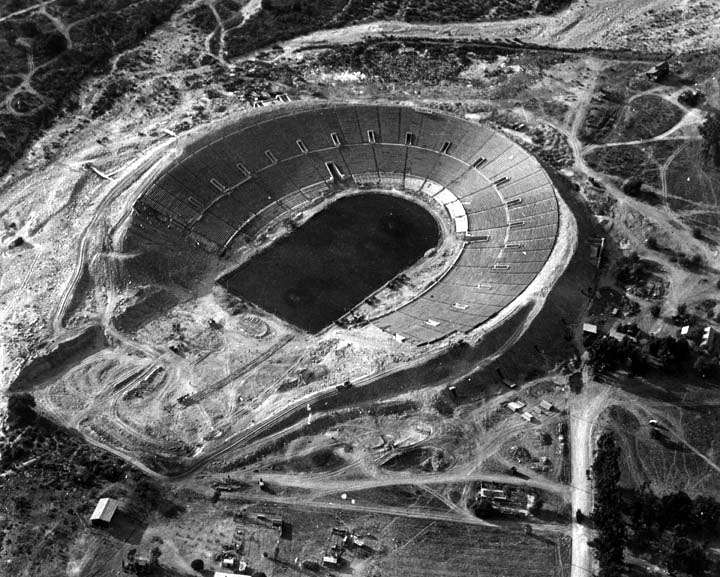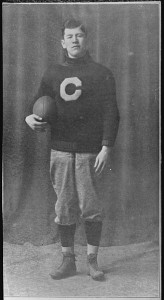Ever stopped to ponder the origins of college football, the precursor to football in all its forms? The slick game you enjoy today has humble—and far-reaching—origins. Rugby School, England, is where the dream started. Players at the prestigious private school had been playing a sort of football since 1750, before running with the ball caught on somewhere between 1859 and 1865 (legend has it that student William Webb Ellis broke the rules by taking the ball in his hands in 1823). British soldiers exported the game to Canada, its popularity spread south, and the first college football game in the US (albeit under old-style rules and using a round ball) took place between Rutgers University and Princeton University in 1869. Rutgers—the victor—duly proclaimed itself “The Birthplace of College Football”.
And so a legend was born. In 1873, Yale, Rutgers, Princeton and Columbia teamed up to thrash out the rules. Harvard at first declined an invitation to shape the future of the game. They played a rougher version, but by the time they locked horns with Tufts in 1875, each team had 11 men, players could pick up and run with the now egg-shaped ball and opponents could tackle the ball-carrier.
It was Walter Camp, “The Father of American Football”, who we can credit for honing the rules and transforming the rugby-style game into what we recognise as football today. And you could say that he had a hand in embedding the game in the nation’s heart through the publication of his many articles on the subject.
“Flying Wedges” & More
Some of the practices of the game at this time were questionable, if not downright brutal. The “flying wedge”, for example, involved the ball carrier being surrounded by a “wedge” of teammates to drive him towards the goal-line. Opponents would throw themselves onto the attacking formation, often with bloody consequences.
In response to this brutality, and even the death of a number of players following injury, The National Collegiate Athletics Association (NCAA) was set up in the early years of the twentieth century. Following suit in 1920, the American Professional Football Association, later the National Football League (NFL), was founded.
In 1903 Harvard opened the first concrete stadium, specially intended for football—now the game had made it big-time. After the opening of the Rose Bowl Stadium in Pasadena, CA, the tradition of bowl games really took off as other locations recognised the benefits in tourist revenue.
The game continued to grow in popularity throughout the twentieth century. By the dawn of the new millennium 650 colleges and universities had their own teams, and audiences had topped 37.5 million a year.
Pants, Padding & Protectors
Meanwhile, players’ uniforms were undergoing their own evolution. The first uniform comprised a laced canvas jacket, black knee pants, stockings and an orange trim jersey. The only protection was a bit of cloth padding over the shoulders and knees. The beginnings of the protective gear we recognise today were seen in the leather helmets worn in the 1890s, which evolved into plastic ones in the latter half of the twentieth century. And during this time, along came the padding synonymous with the game, closely followed by face masks which were made a legal requirement in 1951 and mouth protectors in 1973. Throughout the twentieth century more and more jersey colors were beginning to emerge, and we saw the beginnings of present-day uniforms and their mascots and embellishments. Individual players’ numbers on jerseys were introduced in 1915, but they didn’t appear on both the front and back till 1937. And by the 1990s, the uniform merchandise industry had exploded as everyone wanted a piece of their favorite team.
Big Business
Nowadays it’s not only replica jerseys that sell. The game is big business: from the billions of dollars earned through TV rights for the professional games, right down to the NFL furniture that allows you to watch the game in comfort and style from your own lounge.
And who’d have thought that the game—for college football laid the foundation for football today—could have come so far, from a windswept field in England to the billion-dollar business played out in stadiums seating thousands upon thousands, with audiences around the globe? It’s a national icon, or, in the words of journalist Mary McGrory, ‘Baseball is what we were. Football is what we have become’.
Football milestones
1869 First intercollegiate game between Rutgers and Princeton
1876 Crossbar added to goalposts, field size reduced, number of players in each team reduced to 15
1877 First real uniform
1883 Introduction of first scoring system
1889 First All-American team named
1903 Harvard opens first concrete stadium
1920 NFL founded
1940 The peak of college football popularity: five bowl games in existence
1958 “The Greatest Game Every Played”: NFL Championship game between Baltimore (the victors) and New York
1967 First Superbowl Championship
1998 The Bowl Championship Series begins






